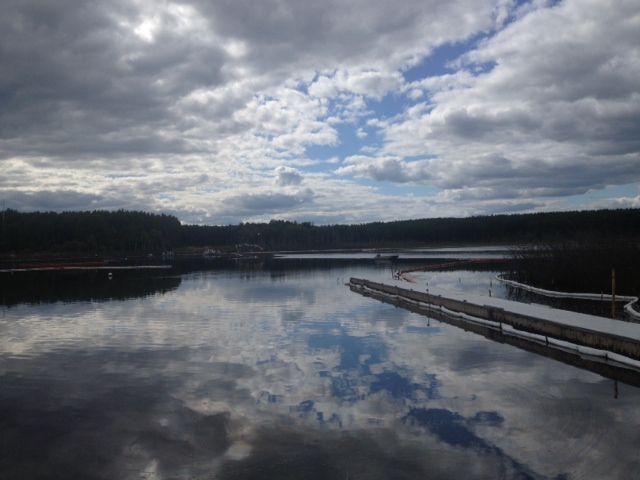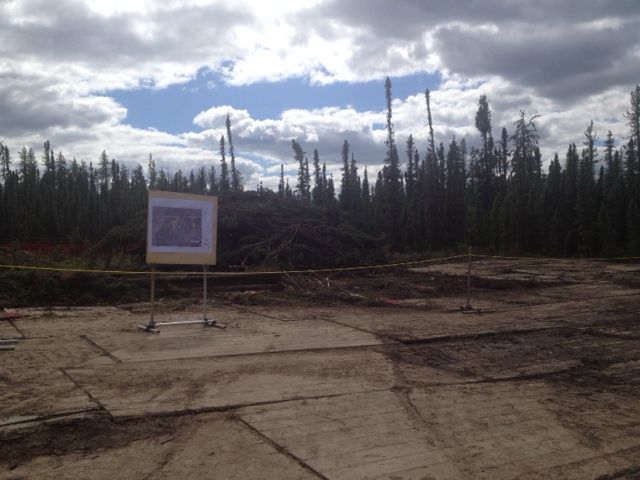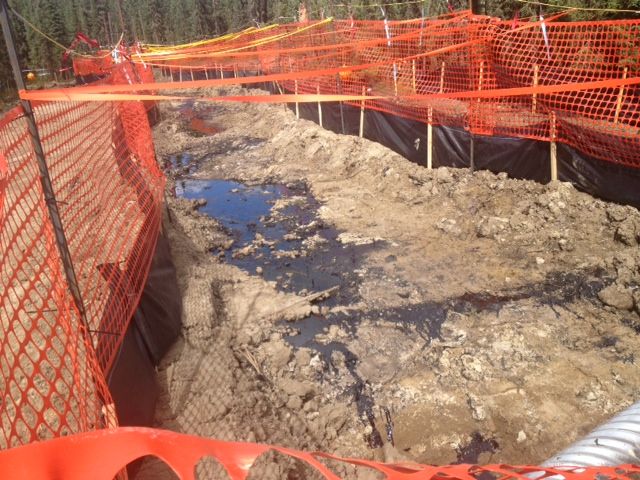Thousands of barrels of bitumen have been oozing to the surface of a remote operation for months and the oil giant responsible doesn’t know when it’s going to stop.

Canadian Natural Resources, Ltd., one of Canada’s biggest oil producers, said it has all four spills at its Primrose sites in northeast Alberta contained.
“We’ve learned from this and we know what steps to take to stop it from happening again,” said CNRL spokesperson Zoe Addington.
The Alberta Energy Regulator isn’t so sure.
“Bitumen continues to come to the surface in all four locations,” spokesperson Cara Tobin said in an email. “The AER does not have any evidence that can confirm cause at this time. We will not allow steaming to resume until we are confident this will not happen again.”
But it’s tough to tell what’s making high-pressure hydrocarbons shoot off in unexpected directions when they’re buried under layers of rock.
On Thursday, August 8, the company provided media access to parts of the site.
In depth, interactive: Crude Awakening – 37 years of Alberta oil spills
More than 7,272 barrels of bitumen emulsion have escaped to the surface since the spills began in May at the isolated Cold Lake Air Weapons Range about 350 kilometres northeast of Edmonton.
About 20 barrels continue to seep out daily from four different locations, affecting about 13 and a half hectares.
According to the company, dozens of wildlife have been killed, including at least 16 birds, seven small mammals and 38 amphibians. A handful of animals are at a wildlife rehabilitation centre in Edmonton.
The company’s found elevated levels of hydrocarbons in the water, but said it shouldn’t impact anyone outside that immediate area.
It’s taking journalists on a tour of the high-pressure cyclical steam stimulation site Thursday – the first such availability since the spill began.
- Budget 2024 failed to spark ‘political reboot’ for Liberals, polling suggests
- Train goes up in flames while rolling through London, Ont. Here’s what we know
- Peel police chief met Sri Lankan officer a court says ‘participated’ in torture
- Wrong remains sent to ‘exhausted’ Canadian family after death on Cuba vacation
As the name suggests, high-pressure cyclical steam stimulation involves steam shot through horizontal wells at extremely high pressure – hot enough to soften bitumen, high enough pressure to coax it to the surface, or (unlike more common steam operations) to fracture the rock itself.
The problem, though, is that once there’s a spill, it’s hard to stop before the pressure goes down.
“We just wait until it finishes,” Addington said, adding that she “wouldn’t have characterized it as taking a long time.”
The company is cleaning up the new bitumen as it leaks to the surface.
“Any emulsion to surface we’re taking very seriously,” Addington added, “and doing everything we can to make sure this doesn’t happen again.”
A Global News analysis of 47 spills of crude oil or bitumen at CNRL’s Primrose and Wolf Lake sites since 2002 indicates the most commonly cited cause has been equipment failure.
In this case, the company says, the problem is that old, vertical wells, thought to be sealed up, came unsealed and allowed bitumen to escape.
The company knows which wellbores are problematic, she said, and knows how to fix them using concrete and steel so the problem doesn’t recur. The company thinks cleanup will cost about $40-million; investigation and repairs, $20-million.
“We’ve got an inventory of old legacy wellbores, we’ve flagged a few that we think are the likely culprits and we’re investigating and we know how to fix them,” she said.
“We believe it’s most likely a cementing failure, and we can repair that.”
But the Alberta Energy Regulator has not reached any conclusions. It’s still waiting on “technical, verified data,” Tobin said.
The regulator has questioned CNRL’s spill assessments before: After a 2009 spill at the same location, the provincial body expressed doubt over CNRL’s initial explanation.
“The ERCB is of the view that the Clearwater shale was likely breached by high-pressure steam injection not related to a wellbore issue,” the regulator (then known as the Energy Resources Conservation Board) said in an investigation published earlier this year.
“The ERCB is also of the view that geological weaknesses in combination with stresses induced by high-pressure steam injection may have contributed to the release.”
That hypothesis – that super-high pressure steam injections plus weaknesses in the rock contributed to a spill – makes sense to Chris Severson-Baker, managing director of the Pembina Institute. What doesn’t make sense, he said, is why the same procedure’s being done at the same site four years later.
Geological weakness, Severson-Baker argues, would mean “there’s a fundamental problem, perhaps, with the design of the project.”
And he says failure to figure out what went wrong and what to do about it could have repercussions for anyone in the industry using steam to extract oil.
“Just how much knowledge does industry and government have about what happens to these when they inject these very high pressures underground?” he said. “How much information do they have about where these fluids might be going?
“When something like this happens in spite of industry and government’s efforts to understand what happens … it calls into question these practices everywhere, really.”
Use the tabs at the top of the interactive to navigate.
Interactive by Leslie Young
EDIT: Map updated August 19, 2013 to reflect new spill location information from AER























Comments